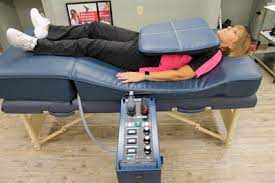In the dynamic landscape of healthcare, the collaboration pemf medical device architects and medical professionals has given rise to innovative solutions that merge design expertise with medical advancements. Architects are increasingly playing a pivotal role in the development of medical devices, contributing their unique skills to create products that prioritize both functionality and aesthetic appeal. This interdisciplinary collaboration is shaping the future of healthcare, where form and function coalesce to enhance patient outcomes and overall healthcare experiences.
Design Thinking in Healthcare:
Design thinking, a human-centered approach to problem-solving, is at the core of the architects’ contribution to medical device development. Architects bring their skills in spatial design, user experience, and aesthetic sensibilities to the healthcare industry. They focus not only on the technical aspects of medical devices but also on creating products that are intuitive, user-friendly, and conducive to healing environments.
Collaborative Approach:
Architects work closely with healthcare professionals, engineers, and manufacturers in a collaborative effort to develop medical devices that meet the diverse needs of both patients and healthcare providers. This collaborative approach ensures that the final product aligns with the practical requirements of medical professionals while also considering the overall patient experience.
Enhancing Patient Experience:
Architects bring a fresh perspective to the development of medical devices by considering the patient’s experience from a holistic viewpoint. This includes the design of medical spaces, integration of technology, and the overall aesthetics of healthcare environments. By incorporating elements of comfort, accessibility, and visual appeal, architects contribute to creating medical devices that promote a positive and reassuring experience for patients.
Innovations in Medical Device Design:
Architectural principles are influencing the design of various medical devices, ranging from diagnostic tools to wearable technology. For instance, architects are involved in developing smart hospital rooms that incorporate advanced medical technologies seamlessly into the built environment. This can include integrated monitoring systems, ergonomic furniture, and ambient lighting to enhance the overall patient experience.
Ergonomics and Functionality:
Architects pay close attention to the ergonomics of medical devices, ensuring that they are not only functional but also user-friendly for healthcare professionals. This focus on usability and efficiency can lead to the creation of devices that streamline workflows, reduce errors, and ultimately improve patient care.
Case Studies:
Several examples illustrate the successful integration of architects in medical device development. For instance, the design of patient-centric infusion pumps, where architects. Collaborated with medical professionals to create devices that blend seamlessly into hospital environments. Additionally, architects have been instrumental in designing innovative surgical instruments that prioritize precision, ease of use, and sterilization.
Challenges and Opportunities:
While the collaboration pemf medical device architects and the healthcare industry presents numerous opportunities, it also comes with challenges. Architects need to navigate complex regulatory frameworks, understand medical requirements, and ensure. That their designs meet the highest standards of safety and efficacy.
Conclusion:
The involvement of architects in the development of pemf medical device represents a significant evolution. In the intersection of design and healthcare. By combining their creative vision with the practical needs of medical professionals. Architects contribute to the creation of innovative and patient-centric medical solutions. This interdisciplinary collaboration holds the potential to reshape the future of healthcare. Making it not only technologically advanced but also aesthetically. Pleasing and user-focused. As architects continue to play a key role in the evolution of medical devices. We can expect a more harmonious integration of design and healthcare for the benefit of both patients and healthcare providers.

